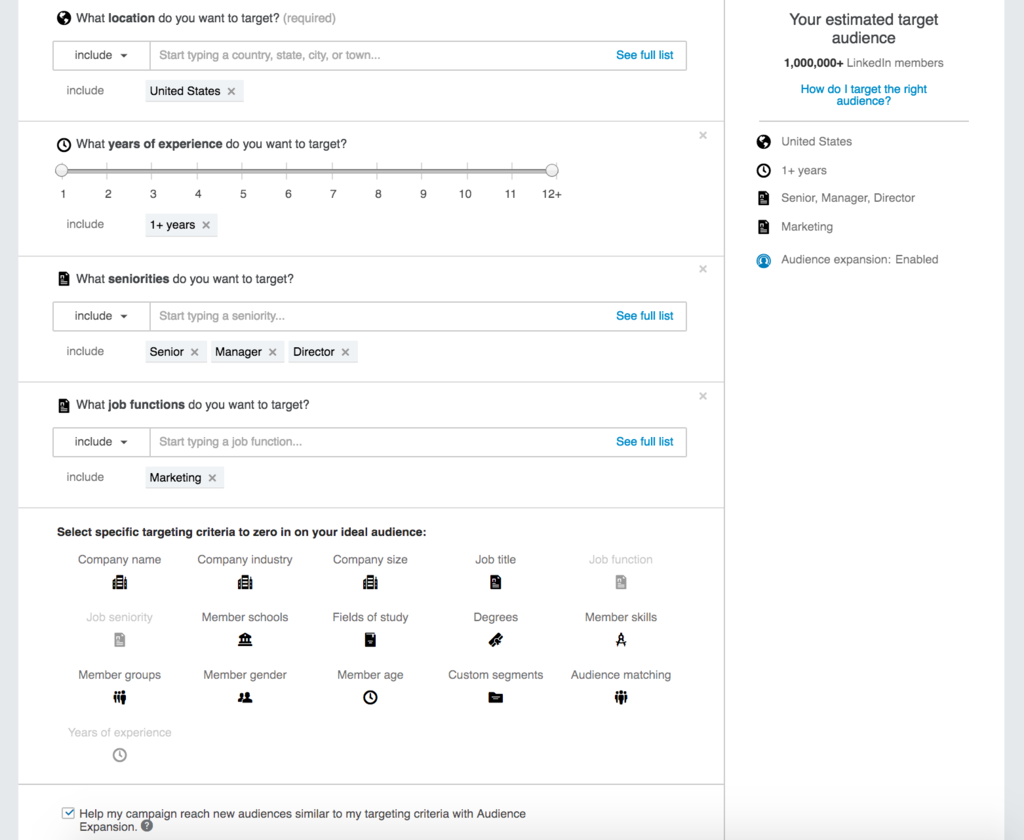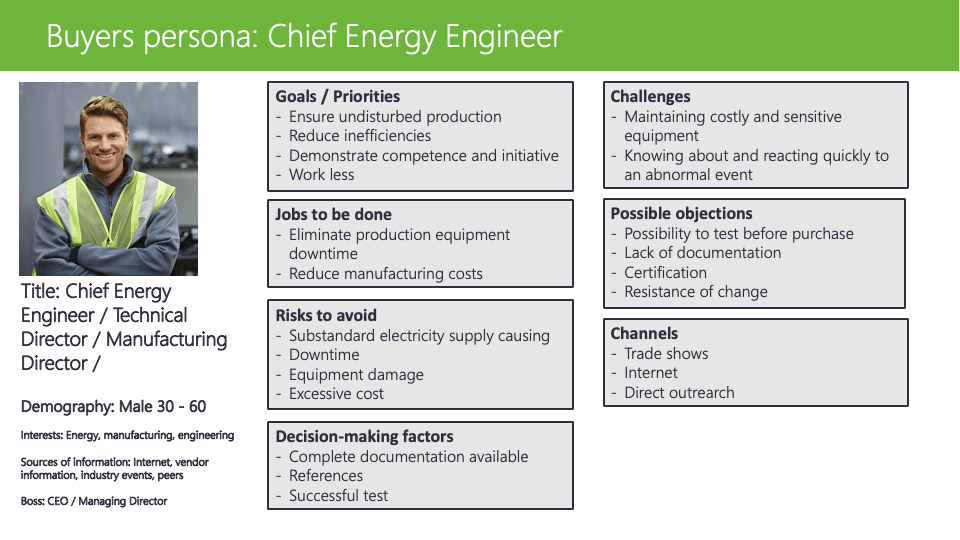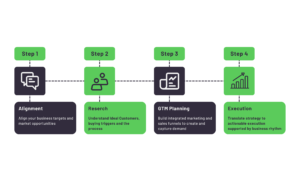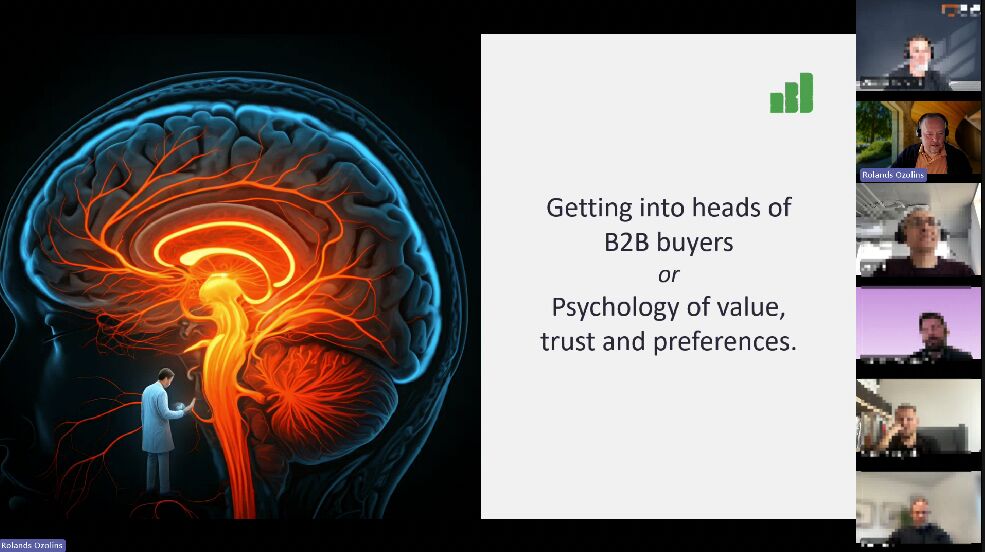This blog was edited and updated on 18.07.2023.
Modern marketing allows generating large quantities or leads – contact details of persons interested in some of your offerings, such as ebooks, whitepapers, webinars, product demos or product trials.
However, not all leads are equal.
It may well happen that the quality of marketing-generated leads is low.
It often is.
Low-quality leads are contacts that do not have strong intentions or capability to make a purchase.
Generating low-quality leads is not only wasteful but also hurts the perception of marketing effectiveness within the company.
Any salesperson has a psychological limit of how many rejections they can handle.
If more than 10% of marketing-provided leads turn out to be bad, sales are likely to become frustrated and will start questioning the value of marketing efforts.
Do not let that happen!
What is high-quality marketing-generated lead?
What is high-quality marketing-generated lead?
In essence, quality marketing-generated leads are contacts likely to make a purchase.
Sales often use so-called BANT criteria when qualifying leads. For example, they try to figure out if the contact has a budget (B), authority (A), need (N), and a certain timeline (T) to make the purchase.
This serves as a good guideline of what sales would be looking for when judging the quality of leads.
However, the best starting point is to have a planning session with your product owner and sales team to define the ideal customer profile and buyer personas.
Identifying your ideal customer profiles and buyers personas
Ideal customer profile (ICP)
Identifying your ideal customer profiles and buyers personas
Ideal customer profile (ICP)
The ideal customer profile is a company profile that you believe would get the most out of your offering and would be interested in exploring it and, ultimately, turning into a paying customer.
Define your ICP by customers industry, business size, geography and other criteria, such as financial situation and even current technology use.
LinkedIn is a good way to target specific company profiles. Additionally, it is possible to obtain rich databases of account lists commercially therefore you can narrow down your targeting only to companies that are likely to become paying customers.

LinkedIn provides rich possibilities to target companies that fit with your Ideal Client Profile
Buyers persona
Buyers persona
While your customer companies pay invoices, a purchase decision is made by people.
It is incredibly helpful to develop a detailed profile of persons making purchase decisions.
Try to define the following:
- Buyers persona demographics: gender, age, education
- Typical organizational title and place in the corporate hierarchy
- Problems/challenges they face daily
- Jobs they want to accomplish
- Risks they want to avoid
- Objections they are likely to have against your offering
- Sources of information they use, their interests and marketing channels to use to reach them
- Anything else you need to know
This profile will help you with the targeting of your message.

Even more importantly, having such a profile is extremely helpful when developing content that engages a specific audience.
Other ways to increase the quality of marketing-generated leads
Other ways to increase the quality of marketing-generated leads
Assuming your planning is already done and you have developed your ICP and buyers’ personas but still get poor quality leads, here are a few things to try.
Keep in mind that you should carefully document changes you make and the impact you get.
It is easy to lose track of what impacts your results.
Make registration more difficult
Make registration more difficult
This sounds counterintuitive, but sometimes it makes sense making registration more difficult.
Ad extra fields in the registration form, such as phone number.
Move registration from lead forms on Facebook or LinkedIn to landing pages.
Probably you will get fewer leads.
But there is a chance that the ones who finish sign-ups have much stronger interest and intent to purchase.
Make the content more technical
Make the content more technical
There is a trend to make content extremely easy to consume.
Bright illustrations, lots of image space, simple language, easy to register.
Everybody likes it for the beauty alone.
And you end up with people who registered for your ebook but cannot even recollect signing up when followed up by sales.
Try the other end of the spectrum.
Produce a whitepaper targeted at more sophisticated readers and explain the topic in-depth. Do not shy away from technical language.
Consider providing product manuals and operating instructions as content if you are marketing to a technical audience and stay away from anything that can be percieved as marketing messages.

Ungate your top-of-the-funnel content
Ungate your top-of-the-funnel content
This approach is probably at odds with the idea of making registration more difficult.
But here is the thing.
You do want your content to be read, don’t you?
What if you make it available to all free of any registration?
Have it indexed by search engines and let people have it.
Publish it on the website, post it on socials and forums, and add a link to the newsletter.
Spread the word every way you can.
If your content is as good as you think, people will follow you, and those with purchase intentions will seek you out.
Will it work better than having people provide their contact details on registration forms?
Yes, it will. LinkedIn research suggests that only as little as 25% of buyers are ready to leave contact details in exchange for marketing content.
However, measuring the actual impact will be difficult. You will not know exactly who is consuming your content.
So you must be ready for that and play for the long term.
Measure things such as changes in website visits, changes in branded search followers on social media, and so on.
A good idea is always to ask inbound leads where they heard about you and record that information in CRM.
Add qualifying questions to the form
One way to keep your sales happy is not to share poor-quality leads with them.
There is no reason to have sales research an account outside your ICP. For detailed reasons about that check my other blog post.
Ad qualifying questions, such as company size, industry or number of offices, or other important questions to qualify the client.
Use marketing automation to automatically disqualify accounts that do not match your criteria and disengage them. Do not send any automated e-mails and remove them from marketing audiences. Erase records of these contacts (it’s a GDPR requirement anyway). There is no use of keeping them at all.
Expand your demand generation campaign to look-a-like audiences
What if you could take the list of your best customers and get more of contacts just like them?
Actually, this is possible.
I think it was Facebook that first introduced the concept of look-a-like audiences.
You upload the list of your existing contacts, let’s say – the list of your best customers.
Facebook’s machine learning algorithm will look at this list and try to figure out what this list of persons has in common.
Once FB has figured that out, you will be able to get your marketing messages in front of people just like the people on the list.
What not to like about it?
Use behaviour scoring as part of the qualification
Modern marketing automation allows analysing your contacts’ behaviour after they are registered.
It adds another important dimension to lead qualification.
If the marketing automation system notices that the contact is returning to the website, opening your e-mails, or consuming other content of yours, this indicates that the person has more than a passing interest.
There is a good chance they are more likely to make purchases.
Conclusion
Fewer leads mean less work for sales.
Better leads mean more sales and everyone is happy.
The suggestions above are well worth testing.
However, modern marketing is not a simple thing.
It is a system of many interconnected elements.
It is enough for one element to fail, and the whole system can be adversely affected.
This is why I recommended having an external marketing expert audit your marketing from time to time to make sure there are no issues that need to be fixed.
In many cases, an audit can quickly identify bottlenecks that, once fixed, unlock big improvements in marketing.
If you are interested in an audit of your marketing activities, just book a call with me.







